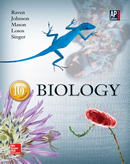1 A) It is a depolarization of a sensory receptor. B) It increases in size with distance from its source. C) It always causes an action potential. D) It only occurs above a threshold value of the stimulus. E) All of the statements are correct. 2 A) Sensory neurons would not fire in response to temperature changes, from hot to cold and from intense to mild. B) Sensory neurons would continually fire. C) The individual would feel pain if subject to high temperatures. D) The individual would be very sensitive to high temperatures. 3 A) Your sense of balance would be affected. B) You would not be able to detect very high frequency sounds. C) You would not be able to detect very low frequency sounds. D) All sounds would be muffled. E) All statements are correct. 4 A) The responsible chemicals act indirectly by binding to G protein-coupled receptors. B) The responsible chemicals act directly on sensory neurons. C) The responsible chemicals act directly through ion channels. D) The responsible chemicals act directly by binding to G protein-coupled receptors. E) None of the statements are correct. 5 A) cGMP levels are high. B) cGMP levels are low. C) Phosphodiesterase is stimulated by a G protein activated by Rhodopsin. D) An influx of Ca+ ions is prevented. E) Downstream bipolar cells are depolarized. 6 A) It will attempt to fly toward the Earth's magnetic east. B) It will attempt to fly toward the Earth's magnetic west. C) It will show little interest in any one direction. D) It will attempt to fly toward the Earth's magnetic south. E) It's impossible to predict what will happen. 7 A) The amplitude of the action potential increases. B) The frequency of the action potentials increase. C) The threshold level for the action potential decreases. D) The frequency of the action potentials decreases. E) None of the statements is correct. 8 A) proprioceptor B) thermoreceptor C) nociceptor D) baroreceptor E) kinoreceptor 9 A) true B) false 10 A) true B) false 11 A) platyhelminthes, arthropods, mollusks, chordates B) arthropods, mollusks, echinoderms, chordates C) annelids arthropods, mollusks, chordates D) annelids, arthropods, chordates E) None of these is correct. 12 A) infrared radiation B) magnetic fields C) electric currents D) All of the selections are correct. E) None of the selections are correct. 13 A) taste B) pain C) gravity D) color E) temperature 14 A) organs of Corti in bats B) organs of Corti in humans C) rods and cones of mammals D) olfactory receptors of mammals E) taste receptors in fish 15 A) tympanic membrane B) cochlea C) semicircular canals D) Eustachian tube E) oval window 16 A) electromagnetic B) proprioceptors C) chemoreceptors D) mechanoreceptors E) None of the selections fall into a major category. 17 A) The basilar membrane vibrates more toward the base. B) The basilar membrane vibrates more toward the apex. C) The basilar membrane vibrates more vigorously without shifting position toward the base, middle or apex. D) The increased intensity does not affect the basilar membrane. 18 A) There are three of them all oriented in the same direction but sensitive to all possible head motions. B) There are six of them organized in three pairs with each pair sensitive to one kind of motion, such as up or down. C) There are three stacked in a random fashion; all contributing to fluid flow through the utricle and saccule which interpret the direction of head movement from the resulting fluid flow. D) There are three oriented in different planes so that angular acceleration can be detected. 19 A) sodium ions B) umami C) protons D) absence of salty and sweet stimuli 20 A) true B) false 21 A) Rods are responsible for black and white vision. B) Cones are responsible for color vision. C) Most of the rods and cones are concentrated in the fovea. D) Cones are responsible for high visual acuity or sharpness.





